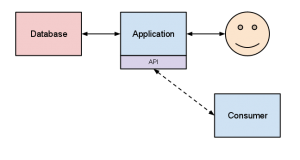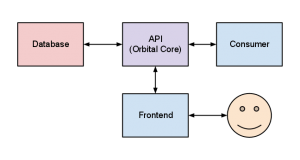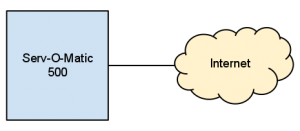On January 20th, Dr. Mansur Darlington from the ERIM & REDm-Med projects came to Lincoln to discuss his work in relation to the Orbital project. Mansur has a consultancy role on the Orbital project and will be joining us again later on in the year, to help us evaluate our progress. It was a very useful and interesting meeting for all of the Orbital Team and the Engineering Researchers working with us. What became clear to us is that while ERIM offers the Orbital project a great deal of the underlying research and analysis of how Engineers work with data, Orbital can reciprocally feed back observations and issues arising from ERIM’s recommendations, which are theoretically robust but have not yet been tested in implementation. Similarly, with the REDmMEd project, which finishes in May/June, I hope that we can take the outputs of that prototyping work and build on them in the development of Orbital.
Here are Mansur’s slides from the meeting and below that, my notes.
- Purpose of the meeting
- Introductions: Bev, Annalisa, Bingo, Chunmei, Joss, Stuart, Lee, Mark, Nick, Paul, Mansur. Apologies, Chris Leach.
- Engineers: Bingo, Chunmei, Stuart
- See slides. ERIM research offers good spread of Engineering research data.Industry collaboration is vitally important.
- MRD in general:
* Need to find out which RC (%), the funding into Engineering School comes from.
* All institutions have to put together a roadmap for RDM by May 2012 for EPSRC.
* Siemens/Lincoln spend a lot of effort in discovery of existing data to base investigations on.
* No national, dedicated Engineering data archive
* Need to look at API integration with DPMOnline (DCC)
* Orbital as tool for managing research projects?
* Ask DCC to visit Lincoln for Policy development and training.
* Reporting to DCC is a formal requirement.
* Include costs of MRD in the university overhead when bidding for funds.
* Datasets as an outcome of research projects. More ‘efficient’ to deal with RDM as part of project.
* ‘Market’ for data. Expectation of costs and benefits of MRD
6. The Nature of Engineering Research Data:
* ERIM: Engineering Research Information Management: Research activity data as well
* Problems with terminology. Need for definition. Both theoretical and practical/empirical outputs from the project.
* Good slides for terminology and understanding domain
* How does Orbital fit into the VRE puzzle?
* Transparent logging and capture of as much activity data as possible.
* Knowing the context is vital for understanding data. Orbital needs to concentrate on contextual data as much as ‘research data’.
* Orbital supports research lifecycle from bidding to completion?
* ‘Engineering research data’ covers pretty much all types of data.
* Need to identify other types of Engineering users to broaden scope of ‘Engineering data’
* Look outside Engineering for variety of data types/activity. Look beyond Engineering. Generalisable.
* Data types is one thing; methodologies and the data they produce are another.
* We manage data so that it can be RE-USED (by someone)
* Must not add to bureaucracy of research




